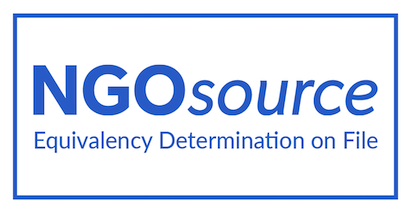International Day of Climate Action
Oct 24 2025 / Posted in Health
- Authors: Sheetal Rajan and Jennifer Spencer (Research)
What’s more worrisome – a changing climate or degrading urban environments? Insights on health from Mumbai’s slum settlements
The International Day for Climate Action invites reflection on how climate change is understood and experienced, in order to be able to take corrective actions to mitigate its adverse impacts. It’s easy to think of it as something happening far away - melting glaciers, burning forests, vanishing species.
But when we undertook two recent studies in Mumbai, we were reminded that climate change is often much closer - woven into everyday lives, even if people don’t call it by name.
Listening to people talk about climate change
In a recent survey (November 2024) SNEHA conducted in six slum settlements across Mumbai, most respondents said they knew little or had never heard about the term ‘climate change’. What’s interesting is that a lack of familiarity with the term didn’t mean people hadn’t noticed changes in their surroundings - “This area was so much greener earlier; we could hear the voice of birds chirping. Nowadays we don’t find any birds here”, reminisced a resident from Mankhurd in the eastern suburbs of Mumbai. Large majorities of people in slums said they were worried about environmental hazards harming their neighbourhoods. Vector-borne diseases (like dengue, malaria) topped the list – 68% were very worried about their rise, and another quarter moderately worried. Everyday concerns of water shortages, worsening air quality and food security were predominant fears among slum residents. Many residents were also worried about extreme weather events such as severe heat waves, floods and cyclones.

This insight set the stage for our next question: what does climate change look like when experienced up close? Here, we focused on child health - because children are particularly vulnerable to the adverse effects of climate change.
When climate change shows up in urban health and everyday systems
We spoke to a small group of paediatricians and parents in and around a slum settlement in Kurla, central Mumbai (in July 2025). We wanted to understand how they perceived environmental impacts on children’s health.
The conversations were revealing. Nobody was worried about climate change. But they spoke — at length — about waterlogging, garbage piles near schools, construction dust and sewage mixing with drinking water during the rains. They described children falling ill every monsoon, respiratory infections from dust and poor air and stomach infections from contaminated water.
When asked about how a changing climate might be affecting children’s health, most participants were unconvinced. Few acknowledged changing weather patterns but saw little direct connection between climate and illness —attributing children’s ailments instead to pollution, poor hygiene, unsafe water, and other everyday environmental conditions — the malaise of a crowded and poorly serviced city. Some also reflected on how the city’s environment has deteriorated over time. One paediatrician, who has seen the city change over the past five decades pointed to the downsides of a fast-developing city - “When I used to pass through BKC, there was only one building, Citibank; the rest was mangrove jungle. Now the area sees the movement of nearly eight lakh cars daily, with rising traffic and pollution contributing to more respiratory cases in nearby neighbourhoods like Kurla”.
These weren’t scientific statements about climate; they were lived experiences of it.
The urban environment as an everyday determinant of health
What emerged from both studies was a consistent pattern: people recognize environmental degradation more readily than climate change. For families and practitioners in low-income neighbourhoods, the systemic realities of city life - contaminated water, overflowing drains, inadequate waste systems and air thick with dust, rather than abstract temperature trends, shaped the evidence and impacts of climate change.
These environmental stressors don’t just cause illness; they multiply vulnerability. For children growing up in dense settlements with limited ventilation, poor nutrition and unsafe sanitation, every monsoon, heatwave or outbreak lands harder. “The threshold of infection might be the same,” one paediatrician explained, “but in slum communities, factors like malnutrition, poor diets and lower immunity make children far more vulnerable.” The environment becomes an active force in shaping health - what one might call vulnerability by design.
Awareness is not always the missing link
It might be tempting to read awareness as a “gap” - people know climate change exists, but don’t connect it to health. Yet that view misses something important.
People do see the symptoms. They describe them vividly. What’s missing is not awareness, but language - a shared way to link what they live to what we, as researchers or policymakers, call “climate change.”
This is not a story about misunderstanding. It’s a reminder that climate communication has to start from where people already are - from their lived experiences of water, waste, air and health.
Listening differently
As we prepare to take this work forward, these insights urge us to listen differently. Climate change does not always announce itself as a new event; it seeps into existing inequities - carried in the air children breathe, the water they drink and the neighbourhoods they grow up in.
Strengthening the everyday determinants of health — clean water, sanitation, nutrition, and safe living conditions — will be central to helping communities manage their health needs in the face of a changing climate. In doing so, we also take meaningful steps towards mitigating climate change itself.
Meaningful climate action, after all, begins with understanding how people already experience risk. If climate change is to feel personal enough to act on, we must first learn to recognize it in the language of daily life - even when it’s called by other names.
References and further reading:
- Climate change awareness and risk perception survey in urban informal settlements of Mumbai — [here]
- Exploring climate change and environmental determinants of child health in Mumbai’s informal settlements: Pilot study findings— [link to report]
Share:















